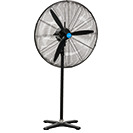Safety Guidelines for Operating Conveyor Systems
Date Posted:28 January 2025
By fostering a safety-first culture and investing in the right training and equipment, businesses can protect their workers and maximise the longevity and productivity of their conveyor systems.
Conveyor systems are indispensable in many industries, ensuring efficient material handling and streamlined operations. However, their benefits come with inherent risks if not operated safely. Mishandling or neglecting safety protocols can lead to injuries, damage to equipment, and reduced productivity. By adhering to strict safety guidelines, businesses can create a safer work environment and minimise operational disruptions.
In this blog, we’ll explore essential safety guidelines for operating conveyor systems to help safeguard workers and maintain efficiency.
1. Understand the Conveyor System
Before operating any conveyor system, ensure workers have a thorough understanding of its components, functionality, and safety features.
• Training and Familiarisation: Operators must be trained on the specific conveyor system in use, including start/stop functions, emergency shut-offs, and maintenance procedures.
• Read the Manuals: Always refer to the manufacturer's manual for system-specific safety requirements and operational guidelines.
• Identify Safety Zones: Clearly mark areas around the conveyor system that are designated for operation and restricted for unauthorised personnel.
By ensuring operators are familiar with the equipment, businesses can reduce the risk of errors and accidents.
2. Conduct Regular Safety Inspections
Regular inspections are critical for identifying and addressing potential safety hazards before they escalate.
• Inspect Belts and Pulleys: Check for frayed belts, misaligned pulleys, and other signs of wear that could lead to mechanical failures.
• Check Guards and Barriers: Ensure all protective guards and barriers are securely in place to prevent accidental contact with moving parts.
• Test Emergency Stops: Regularly test emergency stop mechanisms to confirm they are functioning correctly.
Scheduling routine inspections can prevent accidents and keep the conveyor running efficiently.
3. Implement Proper Lockout/Tagout (LOTO) Procedures
When performing maintenance or repairs, it’s vital to follow proper lockout/tagout procedures to ensure the system cannot be activated unexpectedly.
• De-energise the System: Turn off the conveyor and disconnect it from its power source before beginning any maintenance or repair work.
• Tag the System: Attach a visible tag to inform others that the system is under maintenance and should not be operated.
• Verify Energy Isolation: Double-check that the system is completely de-energised before starting work.
LOTO procedures protect workers from accidental start-ups and ensure a safer maintenance process.
4. Avoid Loose Clothing and Personal Items
Loose clothing, jewellery, or long hair can easily get caught in conveyor belts or other moving parts, leading to serious injuries.
• Dress Appropriately: Workers should wear fitted clothing and avoid accessories such as necklaces or dangling earrings.
• Use Hair Restraints: Employees with long hair should tie it back or use hair nets to keep it secure.
• Prohibit Personal Items: Encourage workers to store personal items away from the conveyor area to reduce the risk of entanglement.
A strict dress code helps minimise the chances of accidents caused by entanglement.
5. Maintain a Clear Work Area
Keeping the area around the conveyor system clean and free of obstructions is vital for operational safety.
• Remove Debris: Regularly clean the conveyor and surrounding area to prevent the build-up of dirt, dust, or debris that could interfere with operations.
• Avoid Overloading: Ensure materials are loaded within the system’s capacity to prevent jams and spillage.
• Clear Pathways: Maintain clear walkways around the conveyor to allow for easy access in case of emergencies.
A clean and organised workspace reduces the likelihood of accidents and improves overall efficiency.
6. Stay Alert and Focused
Distractions can lead to mistakes and increase the risk of accidents around conveyor systems. Workers must remain alert and focused at all times.
• Avoid Multitasking: Operators should focus solely on the conveyor system while in operation and avoid distractions such as mobile phones.
• Communicate Clearly: Use clear signals or designated communication methods to ensure all team members understand operational changes or potential hazards.
• Monitor the System: Continuously monitor the conveyor for any unusual noises, vibrations, or other signs of malfunction.
Maintaining focus ensures potential issues are detected and resolved promptly, preventing accidents.
7. Use Proper Guarding and Safety Devices
Safety guards and devices are essential for protecting workers from moving parts and other hazards.
• Install Belt Guards: Ensure all belts, pulleys, and rollers are covered with guards to prevent accidental contact.
• Utilise Emergency Stops: Make emergency stop buttons or pull cords easily accessible and ensure workers know how to use them.
• Integrate Warning Systems: Use visual and audible warning systems to alert workers of potential dangers during operation.
Investing in safety devices reduces the risk of injuries and creates a safer working environment.
8. Avoid Overreaching and Horseplay
Improper behaviour around conveyor systems can result in injuries or equipment damage.
• Prohibit Horseplay: Enforce strict rules against running, jumping, or other playful activities near the conveyor.
• Discourage Overreaching: Workers should never attempt to reach into moving conveyors or retrieve items without stopping the system first.
• Follow Safety Protocols: Ensure all employees understand and adhere to safety protocols while working near conveyors.
A professional work culture promotes safety and reduces unnecessary risks.
9. Educate Workers on Emergency Procedures
Knowing how to respond in an emergency is critical for minimising injuries and damages.
• Emergency Shutdown Training: Train workers to quickly shut down the conveyor in case of an emergency.
• First Aid Training: Ensure a sufficient number of employees are trained in first aid and can respond to injuries effectively.
• Emergency Evacuation Plan: Establish clear evacuation routes and procedures in the event of a system failure or hazard.
Preparedness can significantly reduce the impact of an emergency situation.
10. Schedule Regular Maintenance
Preventive maintenance is one of the most effective ways to keep your conveyor system safe and efficient.
• Replace Worn Parts: Regularly check for worn-out components such as belts, bearings, or rollers and replace them promptly.
• Lubricate Moving Parts: Ensure all moving parts are adequately lubricated to prevent overheating or friction-related damage.
• Hire Professionals: Engage qualified technicians for periodic maintenance checks to identify and resolve potential issues.
A well-maintained conveyor system is less likely to pose safety risks or experience unexpected breakdowns.
Safety is paramount when operating conveyor systems, and adhering to these guidelines ensures a secure and efficient working environment. From regular inspections and proper training to emergency preparedness and preventive maintenance, implementing comprehensive safety measures reduces the risk of accidents and keeps your operations running smoothly.
By fostering a safety-first culture and investing in the right training and equipment, businesses can protect their workers and maximise the longevity and productivity of their conveyor systems.
































































































































 Trolleys & Hand Trucks
Trolleys & Hand Trucks Cage Trolleys
Cage Trolleys Cleaning Carts & Trolleys
Cleaning Carts & Trolleys Construction Trolleys
Construction Trolleys Custom Trolleys
Custom Trolleys Hand Trucks & Dollies
Hand Trucks & Dollies Laundry/Linen Trolleys
Laundry/Linen Trolleys Lifting Trolleys
Lifting Trolleys Order Picking Trolleys
Order Picking Trolleys Panel Cart Trolleys
Panel Cart Trolleys Platform Trolleys
Platform Trolleys Powered Trolleys
Powered Trolleys Shelf & Tiered Trolleys
Shelf & Tiered Trolleys Shopping Trolleys
Shopping Trolleys Stainless Steel Trolleys
Stainless Steel Trolleys Tool Trolleys
Tool Trolleys Utility & Service Carts
Utility & Service Carts Lifting & Handling Equipment
Lifting & Handling Equipment Forklift Attachments
Forklift Attachments Jib Attachments
Jib Attachments Lifting Hoists & Pallet Hooks
Lifting Hoists & Pallet Hooks Load Skates & Tow Tugs
Load Skates & Tow Tugs Manual Stackers & Lifters
Manual Stackers & Lifters Pallet Jacks
Pallet Jacks Pallet Lifters
Pallet Lifters Pallet Rotators & Dispenser
Pallet Rotators & Dispenser Powered Pallet Trucks & Electric Lifters
Powered Pallet Trucks & Electric Lifters Scissor Lift Trolleys and Tables
Scissor Lift Trolleys and Tables Conveyor Equipment
Conveyor Equipment Conveyor Frames & Stands
Conveyor Frames & Stands Roller & Skate Conveyors
Roller & Skate Conveyors Ladders & Access Equipment
Ladders & Access Equipment Container & Yard Ramps
Container & Yard Ramps Ladders & Step Stools
Ladders & Step Stools Work Platforms & Crane Cages
Work Platforms & Crane Cages Drum Handling Equipment
Drum Handling Equipment Drum Storage & Bunding
Drum Storage & Bunding Drum Trolleys & Lifters
Drum Trolleys & Lifters Forklift Drum Handling
Forklift Drum Handling Waste Handling & Bins
Waste Handling & Bins Bin Lifters & Tippers
Bin Lifters & Tippers Plastic Waste & Wheelie Bins
Plastic Waste & Wheelie Bins Steel Waste & Tipping Bins
Steel Waste & Tipping Bins Waste Carts
Waste Carts Dangerous Goods Storage & Spillage
Dangerous Goods Storage & Spillage Aerosol Cans Storage Cages
Aerosol Cans Storage Cages Bunded Pallets & Storage
Bunded Pallets & Storage Corrosive Goods Storage Cabinets
Corrosive Goods Storage Cabinets DG Storage & Trolleys
DG Storage & Trolleys Flammable Liquid Cabinets
Flammable Liquid Cabinets Forklift Gas Storage Cages
Forklift Gas Storage Cages Site Storage
Site Storage Spill Kits
Spill Kits Shelving & Storage Equipment
Shelving & Storage Equipment Stillage & Transport Cages
Stillage & Transport Cages 750 Series Cage Configurations
750 Series Cage Configurations Heavy Duty Cabinets
Heavy Duty Cabinets Heavy Duty Shelving
Heavy Duty Shelving Mega Bins & Pallets
Mega Bins & Pallets Packing & Workbenches
Packing & Workbenches Parts Trays & Stor-Pak Bins
Parts Trays & Stor-Pak Bins Pegboard & Louvre Panels
Pegboard & Louvre Panels Plastic Bins & Crates
Plastic Bins & Crates Plastic Handling Solutions Bins
Plastic Handling Solutions Bins Plastic Pallets
Plastic Pallets Stack & Nest Bins
Stack & Nest Bins Pallet Racking Accessories
Pallet Racking Accessories Workplace Equipment
Workplace Equipment Modular Workbenches
Modular Workbenches Electric Height-Adjustable Workbenches
Electric Height-Adjustable Workbenches Floor Matting
Floor Matting General Workplace Equipment
General Workplace Equipment Industrial Weighing Scales
Industrial Weighing Scales Packaging Machinery
Packaging Machinery Stationery Cupboards
Stationery Cupboards Storage and Stillage Cages
Storage and Stillage Cages Tool Trolleys
Tool Trolleys Tooling Cabinets
Tooling Cabinets Workshop Fans and Coolers
Workshop Fans and Coolers Safety Barriers, PPE & Signage
Safety Barriers, PPE & Signage Barriers & Bollards
Barriers & Bollards First Aid Equipment
First Aid Equipment Gloves, Knives and PPE
Gloves, Knives and PPE Signage
Signage Cleaning & Site Supplies
Cleaning & Site Supplies Cleaning Equipment
Cleaning Equipment Cleaning Trolleys
Cleaning Trolleys Rubbish Bins
Rubbish Bins Signs & Traffic Supplies
Signs & Traffic Supplies Construction Equipment
Construction Equipment Construction Trolleys
Construction Trolleys Waste Handling
Waste Handling General Site Equipment
General Site Equipment Concrete Equipment
Concrete Equipment Site Storage
Site Storage Lifting Equipment
Lifting Equipment Verdex Specials
Verdex Specials









